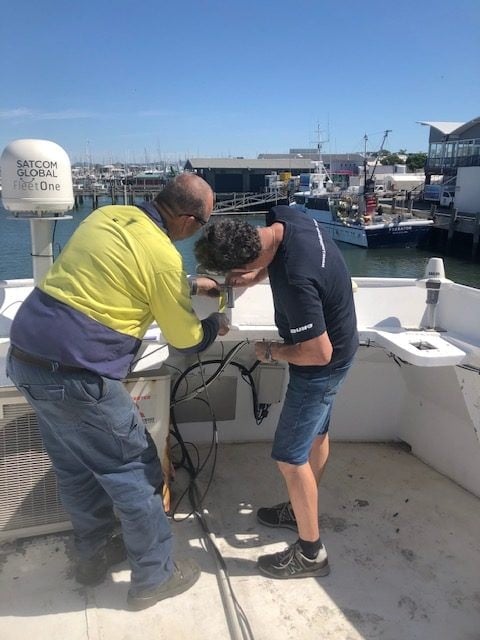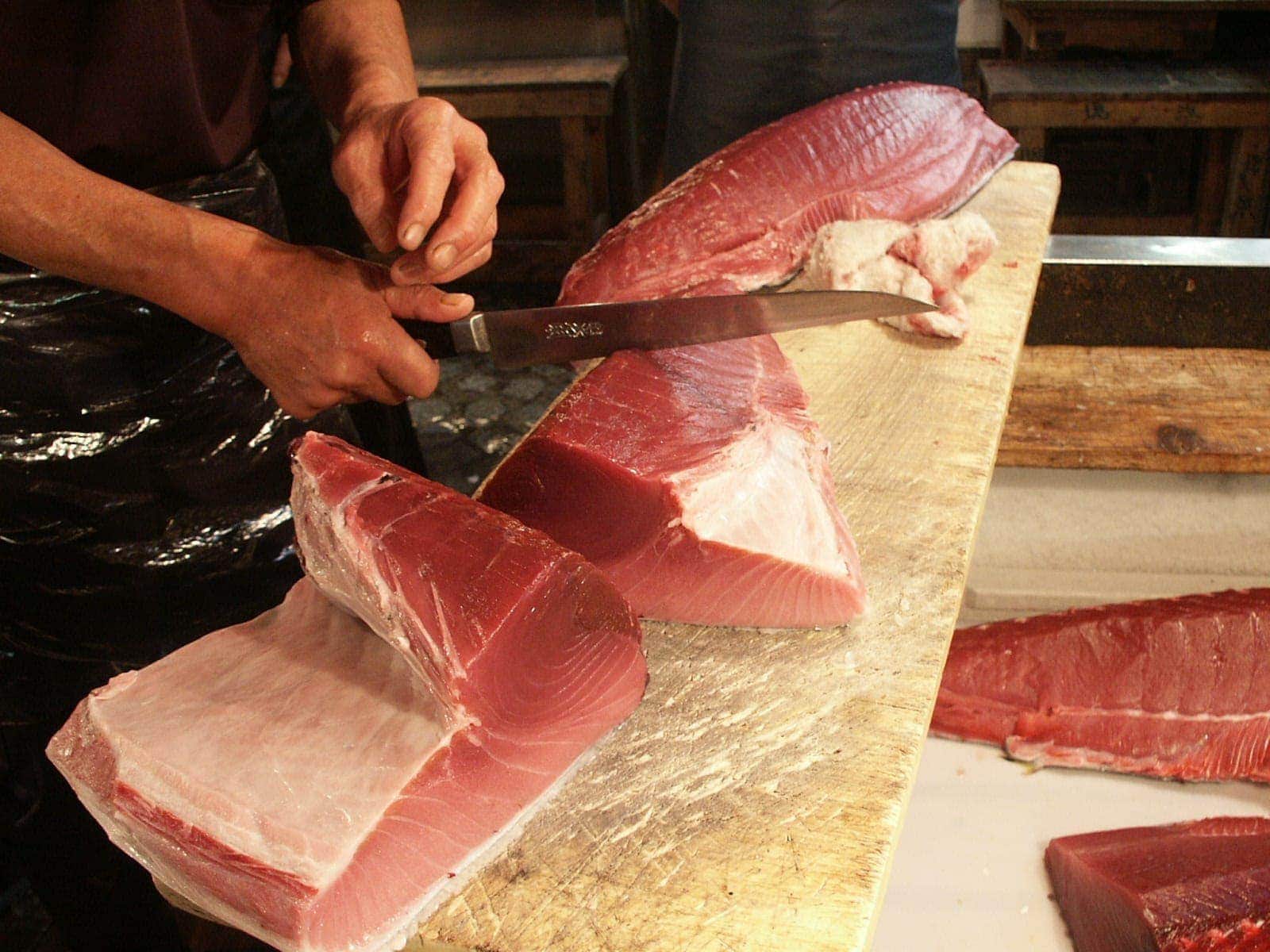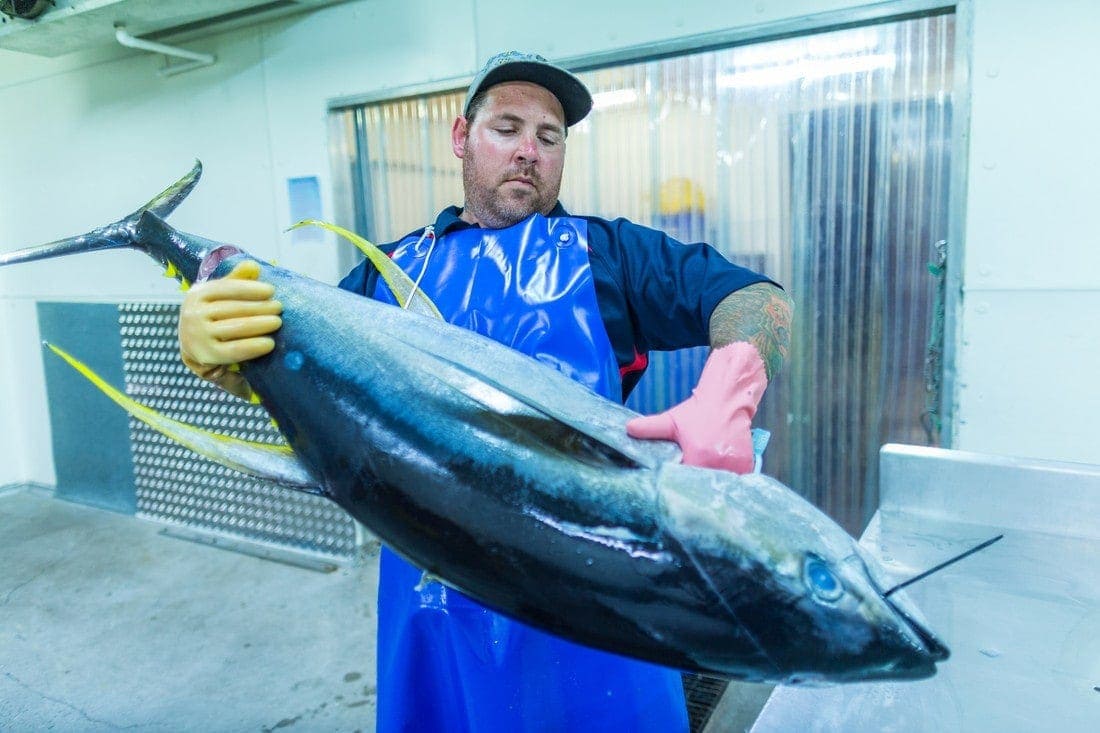Exciting project pipeline to deliver value to tuna industry, says Program Manager
Tuna Australia has an exciting suite of projects underway, and funding is being sought for new projects to complement the ongoing work. We spoke with Tuna Australia Program Manager Phil Ravanello to hear how the projects tie together and will deliver benefits to members and the industry.
Since July 2019, Tuna Australia has been running two projects funded by the Australian Marine Parks round one grants. How are they tracking and what are the expected project outcomes?

Marine electrician and metal fabricator measuring up custom mounts for the satellite receiver. Photo by Phil Ravanello.
For the gear drift project, COVID-19 has affected the timing and logistics of the second round of installations, which we’re only doing now. Despite this, we’ve learned some interesting and unexpected things from the first round of installations. The project findings will provide an understanding of how the different systems work, functionality, economic efficiencies, and how we can manage the drift and distance of longlines near marine parks.
The MSC project continues to track well. We just completed another major milestone in late May with the release of the Public Comment Draft Report. This triggers a round of public consultation that feeds into the final certification report. We have also commenced chain of custody auditing, which is another layer of certification. This ensures MSC products can be traced and validated through the food supply chain from boat to end consumer.
Tuna Australia recently applied for funding for two new projects, relating to market diversification and managing wildlife interactions. Can you tell us about those?
We’ve been successful in obtaining a grant from the Queensland Government to look at how we can move from whole fish to tuna loins and products using modified atmosphere packaging. This work, kicking off in July 2020, will include an assessment of the latest food technologies to extend and improve shelf-life, including the regulatory framework, equipment required, the process involved, and cost-benefit analysis.

Australian Southern bluefin tuna, chilled and processed into ‘koro’ blocks, processed in Tsukiji fish market, Tokyo. Photo by Alistair Douglas.
We’ve applied for some Commonwealth funding to run a series of wildlife mitigation projects. The aim of these projects is to further improve our performance in minimising wildlife interactions while making mitigation techniques safer to use. We have many different types of boats and operations in the fishery and individual operators can decide what mitigations work best for their circumstances.
What other projects are on the horizon for Tuna Australia?
Tuna Australia has been contracted to do comparisons of processor weight information with catch disposal records and get this data into an agreed format to feed into the CSIRO stock assessment model. This is really important work to ensure that science has the best available information from industry to create a full picture of stock status.
We’ve facilitated the collection of swordfish samples from our major processors in Mooloolaba for a project being led by the University of the Sunshine Coast to understand product quality. Researchers are investigating how spatial, temporal, seasonal and oceanic variations affect the meat quality of swordfish. The aim is to provide information back to operators on the best times of year to target swordfish to achieve the best product quality and hence better prices.

Walker Seafoods. Photo by MSC.
Taken as a whole, what is Tuna Australia’s goal for doing these projects? How do the projects support and feed into one other?
These are diverse projects, and at first glance, it appears that one is not connected to another. However, I think these projects build on our continual improvement processes that will no doubt open up new and exciting opportunities for our food-producing sector.
How will these projects provide value back to members and the broader tuna longline industry?
The Tuna Australia Board is very proactive in identifying ways to improve our fishery. We have been successful in attracting funding, thereby allowing the development of key partnerships with other stakeholders and sourcing of expertise. A lot of the projects we are doing are expensive and, while important for the most part, they are not the sorts of things that an operator or company can afford to undertake individually or has the time to do. By undertaking projects using a collective approach, improvements on how we catch fish, manage wildlife interactions, open up new market opportunities, and certifying the fishery will add significant value to the fishery and individual operators.